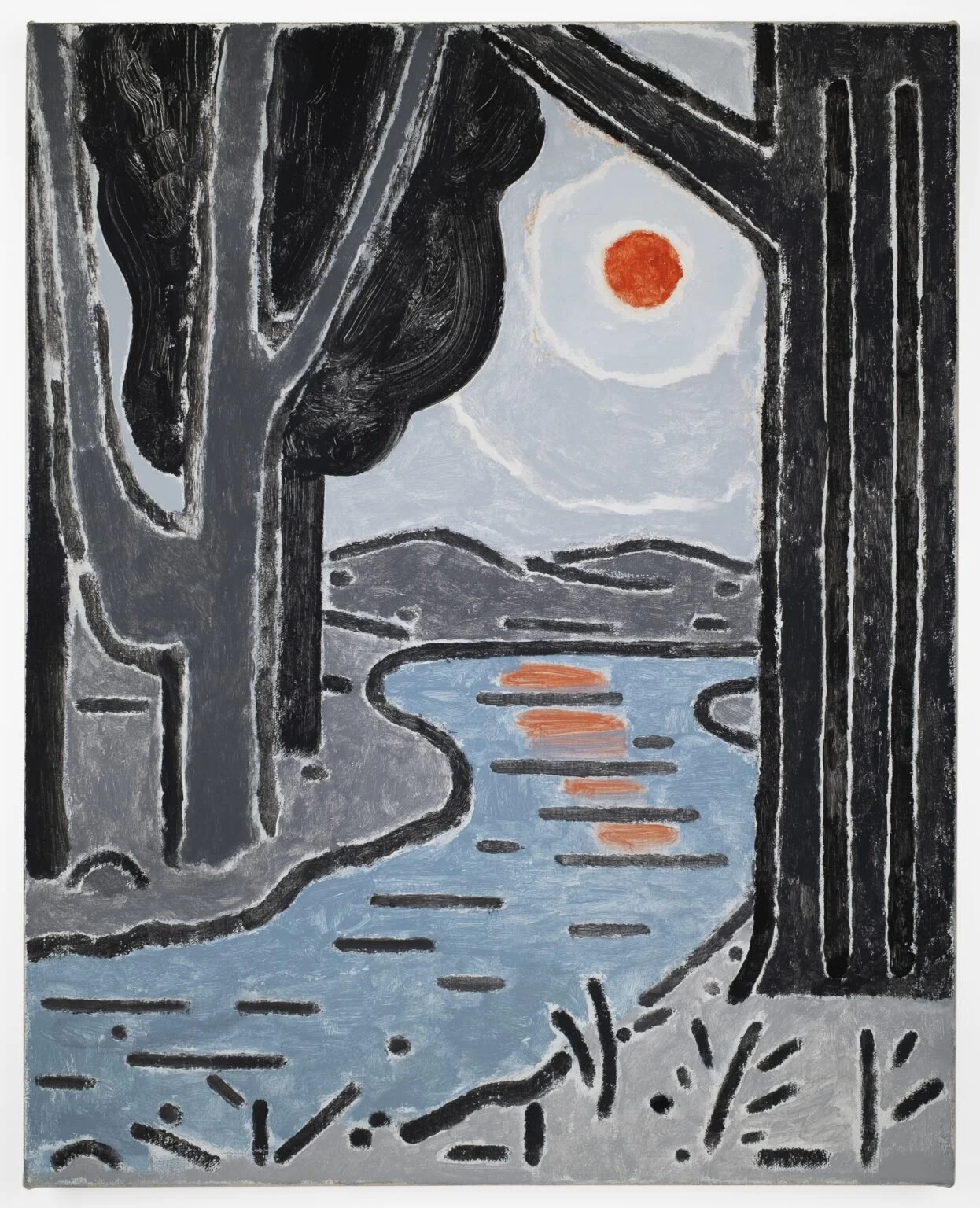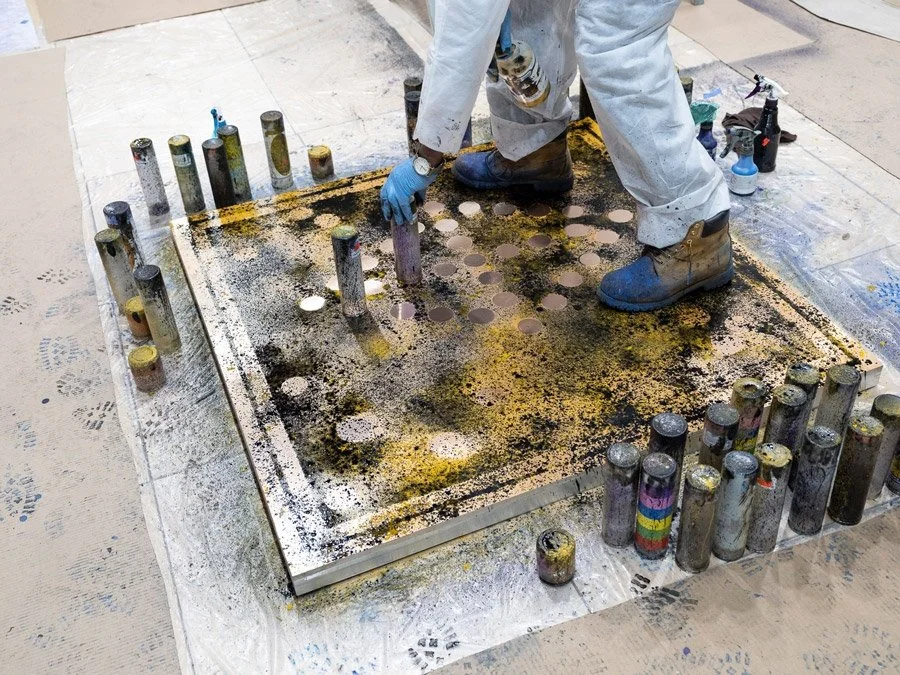Juan Muñoz
“Seven Rooms”
New York, 537 West 20th Street
The presentation will feature seven discrete installations from throughout Muñoz’s career that highlight his expansive notion of sculpture. Among the most significant artists to rise to international prominence in the mid-1980s and 1990s, Muñoz sought to foreground the relationship between the art object, architectural space, and the viewer in his formally and conceptually inventive work. Wide-ranging in scale and format, each installation provides viewers with a distinct experience.
Among the most significant artists to rise to international prominence in the mid-1980s and 1990s, Muñoz sought to foreground the relationship between the art object, architectural space, and the viewer in his formally and conceptually inventive work. Until his untimely death at the age of forty-eight, he produced an extensive, powerfully evocative body of work that includes not only sculptures and installations but also drawings, writings, sound works, theater pieces, and curatorial projects that uniquely explore the narrative and philosophical possibilities of art. As Todolí notes, “Juan Muñoz was an artist who, when confronted with a problem, would find a solution, a way out, and then look for a new problem, taking nothing for granted. He was always looking to make trouble, for a new way of looking at things.”
The works on view bring together art-historical, literary, and theatrical references, while seeming to exist apart from time and space. Presented in the first room, The Wasteland (1986) is one of Muñoz’s earliest installations and the first to incorporate the entirety of the gallery, physically enveloping the viewer within the work itself. A tessellated optical floor spans the space from edge to edge, at once evocative of Francesco Borromini’s baroque interiors and use of forced perspective as well as Carl Andre’s systematically constructed sculptures, intended for the viewer to walk on. At one end, a bronze dummy—a recurrent motif in Muñoz’s work—looks back at the viewer. Absent his ventriloquist, the figure is rendered silent, merely hinting at the possibility of sound. The work’s title refers to the 1922 T. S. Eliot poem of the same name, considered a classic of modernist literature and significant for its theatrical address and weaving together of present-day observations with history and myth to decry a barren landscape.
In contrast, the late work Four Piggybacks with knives (2001) in the second room at first glance resembles classical figurative sculpture. Like his contemporaries Thomas Schütte, Robert Gober, and Katharina Fritsch, Muñoz returned to the figure, and the possibility of narrative, at a time when it was very much out of vogue in the broader art world. Here, his smiling doppelgängers are engaged in a mysterious dynamic. Four men dressed in suits carry four others by piggyback—their clothing drapes fluidly, belying the work’s bronze construction and recalling classical Greek sculpture. Each of the figures held aloft languidly wields a pocketknife in hand—a recurrent motif in Muñoz’s work. It is unclear who is aggressing upon whom (if anyone at all) as they circle each other, highlighting the thin distinction between pleasure and pain, play and danger, pursuer and pursued. Their tragicomic setup derives in part from Goya’s satirical allegories of nineteenth-century Spanish society, particularly evident in his late drawings.
Schwelle (Threshold) (1991), on view in the third room, features six towering columns comprising stacked terracotta blocks with a bronze figure nested within them. Originally designed to fit the domestically scaled Museum Haus Lange in Krefeld, Germany, in subsequent installations the columns have stopped short of the height of the room, seeming to hold the weight of nothing at all. Though the columns evoke the minimalist ethos of utilizing industrial materials, Muñoz challenges that paradigm by imbuing the installation with a psychological dimension, hand-making the terracotta blocks and including a human figure, in this case a dwarf, who stands sentinel amongst the pillars, gazing straight ahead. Referencing the unique position of proximity and influence that dwarfs held in seventeenth- and eighteenth-century European courts as the only individuals allowed to levy criticism, Muñoz was influenced in particular by the paintings of Spanish master Diego Velázquez as well as the personal story of the rococo architect François de Cuvilliés, which convey the historical position of these figures.
In the fourth room, three figures are suspended in the air, hanging acrobatically in space. Based on Edgar Degas’s 1879 masterwork Miss La La at the Cirque Fernando, in which a performer depicted from below hangs only by a rope held in her teeth, Muñoz’s figures conjure a range of associations. By positioning them skyward, Muñoz again borrows from Borromini, inciting viewers to look up as they traverse the gallery. Though constantly in motion, spinning gently on their axis, the figures remain rooted to a single spot, ambiguously straddling the line between illusion and danger.
On the gallery’s second floor, Muñoz’s Conversation Piece (2001) features five figures composed of nondescript human heads and torsos and a rounded bottom. One of Muñoz’s most sustained bodies of work, the Conversation Pieces were first devised in 1991. He continued to work on them until his death, creating new groupings and inserting them into a range of situations both indoors and out. Following the example of Alberto Giacometti, whom he greatly admired, Muñoz purposefully designed these works to be nonnaturalistic so as to divest them of any perceived associations, allowing him to create psychologically charged tableaux. Captured as if in motion, the figures remain static, rooted to the ground, lacking the possibility of movement. The absence of sound again figures heavily as the individual elements—as their title suggests—seem to be engaged in a dialogue without words, left open for the viewer to imagine.
A suite of thirteen works on paper from 1992 that depict scenes from Joseph Conrad’s 1896 short story “An Outpost of Progress,” considered the progenitor to his seminal Heart of Darkness (1899), highlights Muñoz’s facility as a draftsman. For the artist, drawing was an autonomous and parallel practice to his three-dimensional works. Utilizing a range of techniques, Muñoz presents these scenes as black-and-white vignettes, some lightly sketched and some richly rendered, arranging them in a format reminiscent of comic strips. Viewed together, the thirteen drawings form an installation unto themselves.
Finally, Stuttering Piece (1993) represents a drastic shift in scale, requiring an intimate, one-on-one engagement. Two miniature seated figures, only inches tall, are nestled in the corner of the gallery and dramatically spotlit. An audio track repeats a circuitous and enigmatic conversation: “What did you say? / I didn’t say anything. / You never say anything. No. But you keep coming back to it.” Inspired by Muñoz’s interest in Samuel Beckett’s existential dramas, the work both loops endlessly and never seems to be complete.
Spanning the entirety of his career, these seven installations provide an overview of many of the recurrent themes and motifs of the artist’s work, as well as demonstrate his sustained engagement with the human figure in various forms. As Muñoz noted, “I build these works to explain to myself things that I cannot understand otherwise.”






